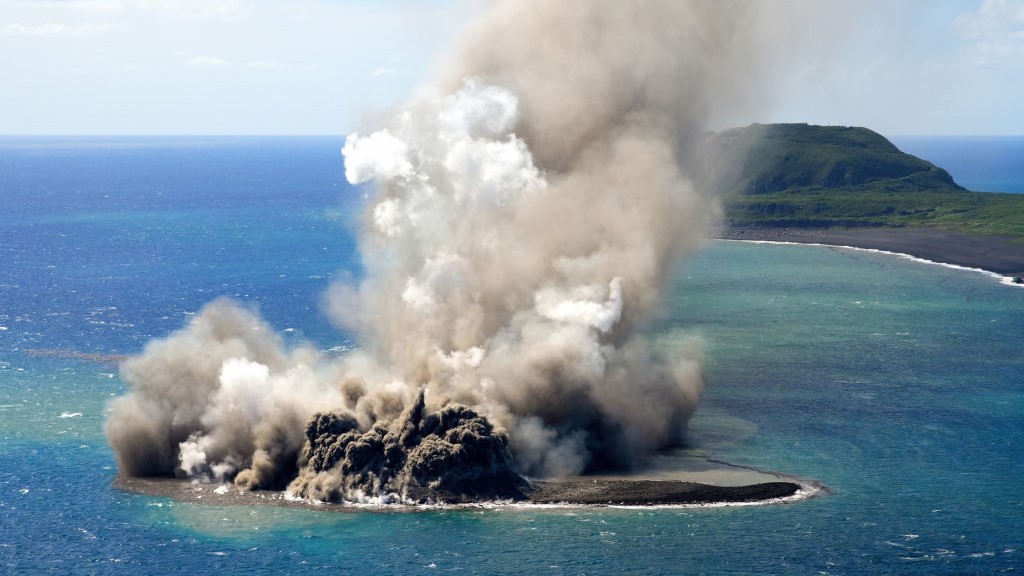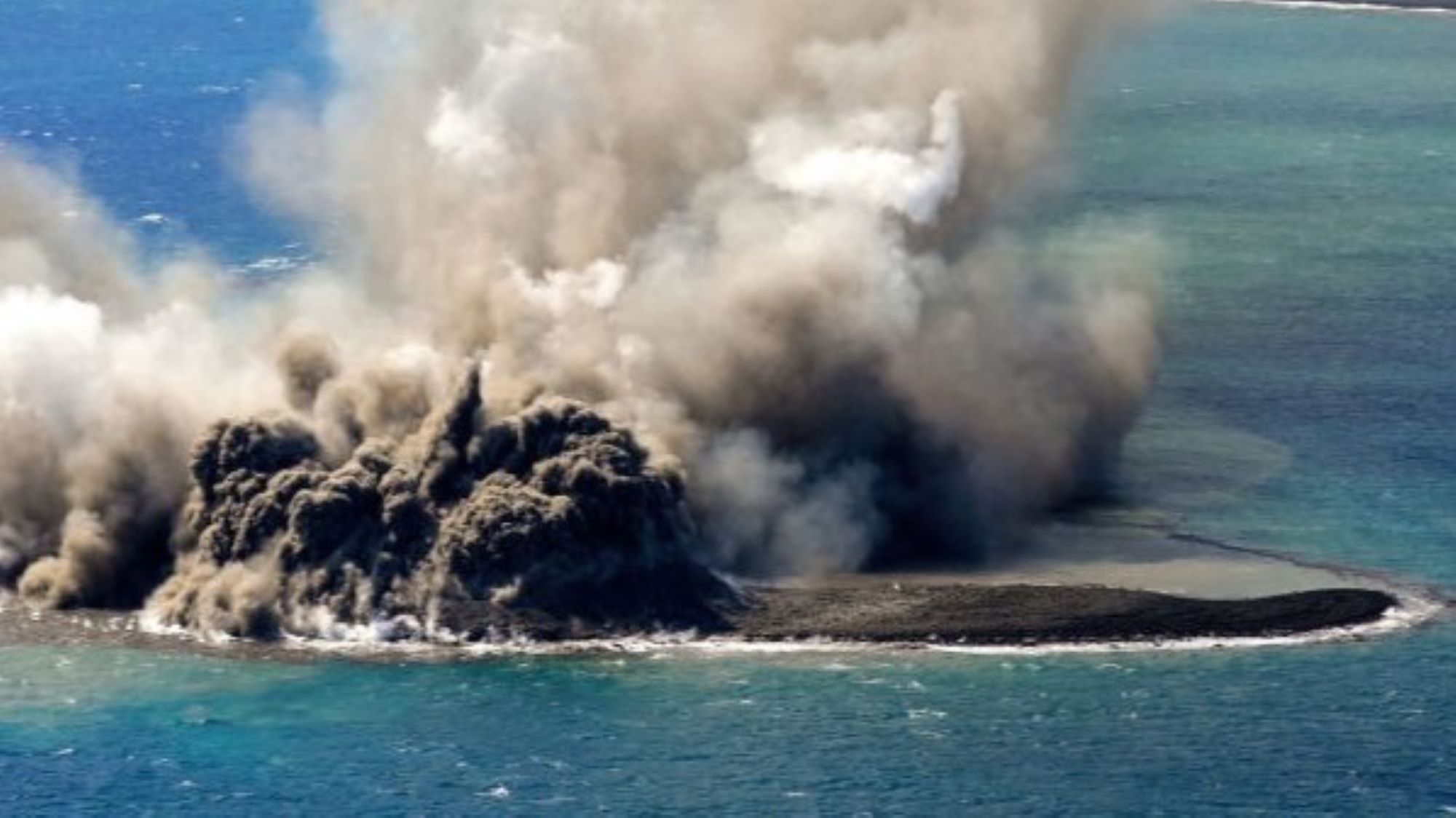
An underwater volcanic eruption on Oct. 30 has birthed a new island in the Pacific after the explosion flung huge chunks of rock into a pile off the coast of Japan's Iwo Jima island.
An aircraft belonging to the Japanese newspaper Mainichi Shimbun spotted the first signs of an eruption in the southern part of the Izu-Ogasawara arc, roughly 750 miles (1,200 kilometers) south of Tokyo, around midday local time. Explosions occurred every few minutes as red hot magma hit water below the surface, throwing large blocks of rock more than 160 feet (50 meters) into the air, according to a translated statement.
The eruption breached the ocean surface in at least two locations, researchers at the University of Tokyo said in the statement, with explosions occurring only off the southernmost tip of Iwo Jima. Rocks also piled up north of the explosion site, however, forming a round and rugged island about 330 feet (100 m) across. Waters surrounding this new island were discolored and littered with pumice, a type of extremely porous rock that forms during explosive volcanic eruptions.
"Floating pumice and discolored water occur from the entire periphery of the island, suggesting that magma is erupting from this location," researchers wrote in the statement. Rocks on the island formed a concentric pattern, they noted, but there was no sign of a crater on the surface.
Several underwater eruptions have been recorded in this region in recent years. Known as phreatic eruptions, these events are characterized by explosions of steam and volcanic material at the surface. They are triggered when water comes into contact with sizzling magma, lava, rocks or other scalding deposits.

Underwater, volcanic material gushing from the seabed instantly solidifies. Regular eruptions have caused Iwo Jima to rise by more than 3.3 feet (1 m) every year, making it one of the fastest-rising caldera volcanoes in the world, according to the statement.
The recent eruption was preceded by volcanic tremors that began on Oct. 21 and occurred every two minutes until Oct. 30, The Japan Times reported. An outpouring of magma underwater likely caused an existing mound of solidified magma to breach the water's surface, giving rise to the new island, Setsuya Nakada, a professor emeritus of volcanology at the University of Tokyo, told the newspaper.
The eruption is ongoing, and the constant addition of volcanic rock to the newly formed island could protect it from fast erosion.
During a previous eruption on the southeastern coast of Iwo Jima in July 2022, magma burst out of a vent for the first time, alongside phreatic explosions of ash and steam. "The location of the eruption is almost the same as the 2022 eruption and is thought to indicate the resumption of magma activity on Iwo Jima," researchers wrote in the statement.
It is unclear how long the latest eruption will last, but the new island could merge with Iwo Jima, Nakada told The Japan Times.
Following a volcanic eruption in 2021, the seabed rose to such an extent that two dozen "ghost ships" that sank in the 1945 Battle of Iwo Jima resurfaced.






